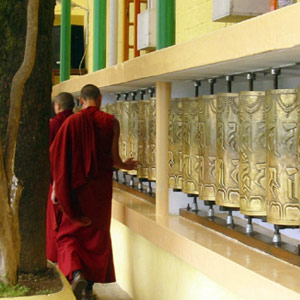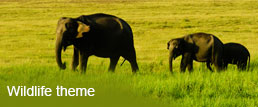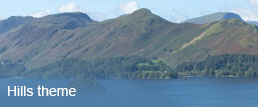What to See
Norbulingka: Literally the Jewelled Park, this drew inspiration from the Dalai Lama’s summer palace and is a fine example of Tibetan craftsmanship. It is an institute that was established to preserve and teach ancient Tibetan arts. Among the teachings are thangka making, statue making, carpentry, traditional Tibetan image sculpting, woodcarving and metal crafting. The thangkas are bright illustrations of traditional Tibetan gods created as per details laid down in the ancient manuscripts. You can also place orders for these in the painting department.
Open from: Craft department timings – 8.00 am-5.00 pm (Sunday closed);
Showroom timings – 9.00 am-6.00 pm (closed for lunch, 12 noon-1.00 pm)

Church of St John-in-the-Wilderness: Located a little outside Little Lhasa en route to Lower Dharamsala, this church stands silent amidst towering oaks and deodars. An old, though well-built structure, it has withstood the attacks of time and comes across as a neo-gothic church with exquisite stained glass windows showcasing John the Baptist with Jesus. The graveyard adjacent to it is the resting place of the British Viceroy Lord Elgin, and is marked by a miniature marble cathedral-like structure.
Open from: 10.00 am-5.00 pm,
Service timings – Sunday, 10.00 am
Tsuglakhang: This is the main temple complex in Dharamsala, built without cutting a single tree! In fact it is based on trunks of growing deodars, held in place by adjustable iron rings. The main deity inside is a 9 ft high gilded Buddha on a lotus seat. Also located within are 12 ft high gold images of the Padmasambhava and Avalokiteshwara. In fact, it is believed that some elements of the temple were brought from the originalTsuglakhang in Tibet. The temple also provides beautiful views of the neighbouring Dhauladar peaks. Evening is the best time to visit it when prayers and other rituals are conducted by the Dalai Lama. The courtyard is the centre of activities as the monks make preparations for the Kalachakra ceremony. The café here is also the best place to try out some Tibetan herbal tea and South Indian coffee.
Note - Photography is not permitted inside the monastery
Namgyalma Stupa: This Buddhist stupa is surrounded by prayer wheels, located centrally in McLeod Ganj. It is dedicated to the Tibetans who lost their lives fighting for their homeland. There is a shrine with an idol of the Sakyamani Buddha and reflecting a typical indo-Tibetan style of architecture. This stupa is a hub of activity through the day as you watch devotees turning turn the prayer wheels and chant mantras.
Tibetan Institute of Performing Arts: This institute was established as early as 1959 by His Holiness the Dalai Lama, as an attempt to preserve Tibet’s unique performing arts. The institute houses over 112 members proficient in various arts, singing, playing instruments and dances. Along with these, there is a handicrafts section, with produces in-house costumes and props needed for the performances. A special highlight of the TIPA is the Traditional Tibetan Opera, which hosts the annual 9-day Shoton Opera Festival marked by Lhamo performances. Performers, dance and perform to the tune of cymbals and drums, and sport vibrant Tibetan masks. Another annual festival is the 3-day Yarkyi Festival, which is held in August to commemorate the establishment of TIPA. Along with cultural performances, it is marked by sporting competitions like soccer, basketball, badminton and volleyball. To make its presence felt across the world, TIPA also organizes several tours, showcasing Tibetan culture to audience across the world.
Note – Shoton Opera Festival – show entry few Rs 50, still camera fee Rs 100, video Rs 500
Losel Doll Museum: Located inside the Norbunlingka Institute, this doll museum houses more than 160 different dolls. It is probably the best place where you can get a glimpse of the original Tibetan costumes, most of which don’t exist in reality anymore.
Open from: 9.00 am-6.00 pm (closed for lunch, noon-1 pm)
Dal Lake: Located 2 kms from McLeod Ganj, this is a small lake set amidst forests and hills. It is a scenic picnic spot and you can even feed the goldfish that abound here. The locals consider this lake extremely sacred and it is believed that a dip here fulfills wishes.
Bhagsunag: Located barely a km from McLeod Ganj, Bhagsunag is home to an ancient temple and a beautiful waterfall. This is another scenic spot you can walk around in.
Chinmaya Tapovan: This ashram is located almost 10 kms from Dharamsala and houses a 9 m high idol of Lord Hanuman, a temple dedicated to Lord Rama, a meditation hall and a health and recreation centre.
Jwalamukhi Temple: Located close to Dharamsala, this temple derives its name from the eternally burning flame from rock in the sanctum. This flame is said to be the manifestation of Goddess Sati and offerings of rabri, misri, milk and fruits. Near the flame, two pools of clear water flow, fed by the underground springs. Though the water seems to be boiling, it is actually refreshingly cool! This temple is the site of the vibrant Navratri Festival held in honour of the goddess.
Top Hotels in Dharamsala
Top Landmarks in Dharamsala
- Hotels Near The Shrine Of Chamunda Devi
- Hotels Near Bir Billing Paragliding
- Hotels Near Jwalamukhi Temple
- Hotels Near Brajeshwari Devi Temple
- Hotels Near Kangra Railway Station






